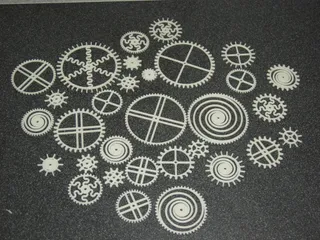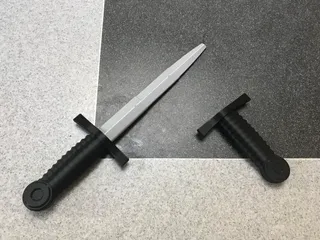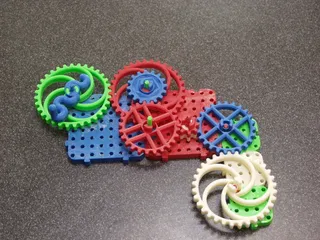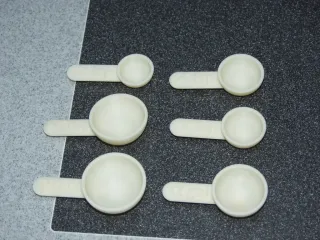Penrose P3 Tiles
Description
PDFPenrose tilings cover a surface in a pattern with some remarkable properties: they are aperiodic, have 5-fold symmetry, and are self-similar. There are several variations of Penrose tilings--this Thing contains the two tiles needed for the rhombus (P3) tiling.
The edge of each tile has either a notch or a protrusion, which is either round or triangular. These notches and protrusions keep you from creating a repeating pattern when tiling. Round notches need to be lined up with round protrusions, and triangular notches with triangular protrusions. It is fairly easy to wind up with a "defect" where there's a spot no tile can fit.
For more information, see the Wikipedia article, http://en.wikipedia.org/wiki/Penrose_tiling (also the source for the pattern I used), and these two more technical discussions: http://www.ams.org/samplings/feature-column/fcarc-penrose and http://www.ams.org/samplings/feature-column/fcarc-ribbons
Note that a proper Penrose tiling will require about 16 large tiles for every 10 small tiles, so if you just print a bunch of this file you will have an excess of small tiles.
Instructions
- Print a bunch of tiles. On my Up I can print 9 copies of this file (18 tiles total) at once; you'll probably want at least twice that number to really play with them.
- Fit together, being careful to match rounds to rounds and triangles to triangles.
Tags
Model origin
The author marked this model as their own original creation. Imported from Thingiverse.



